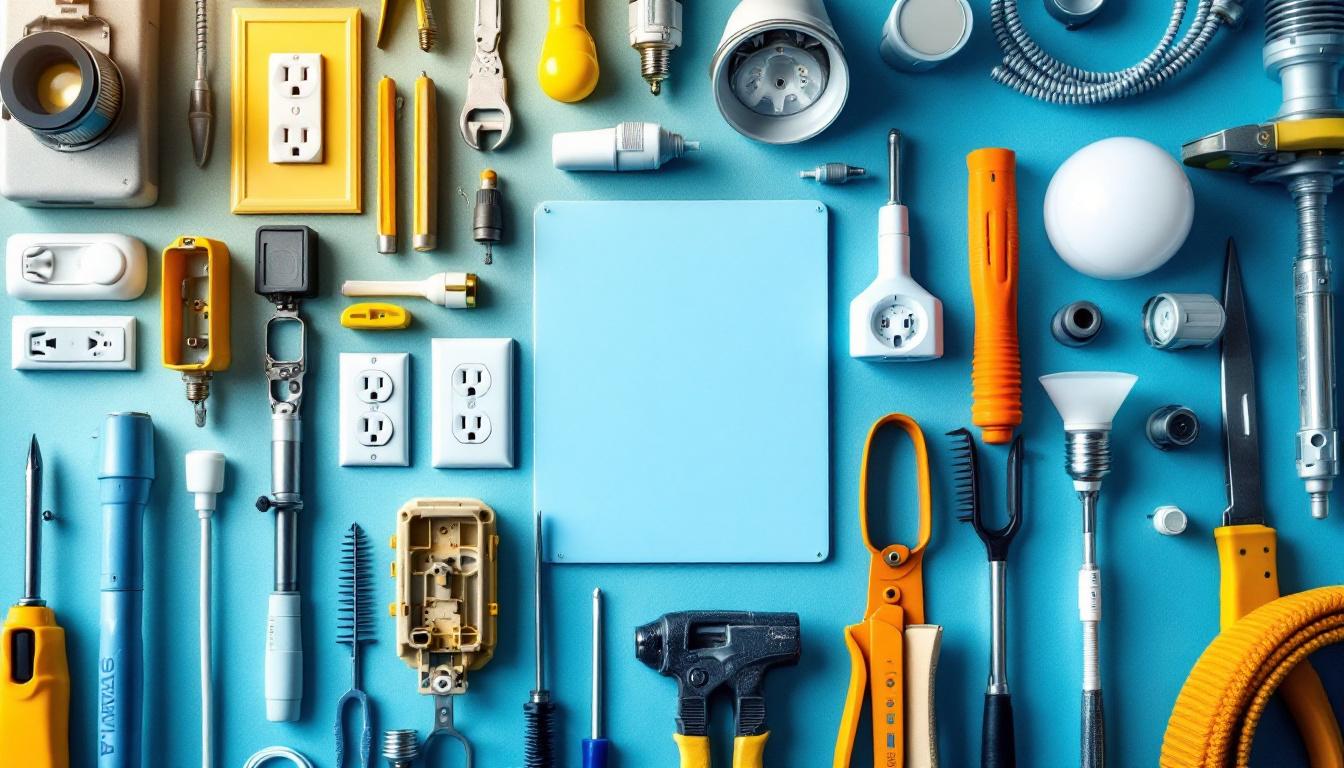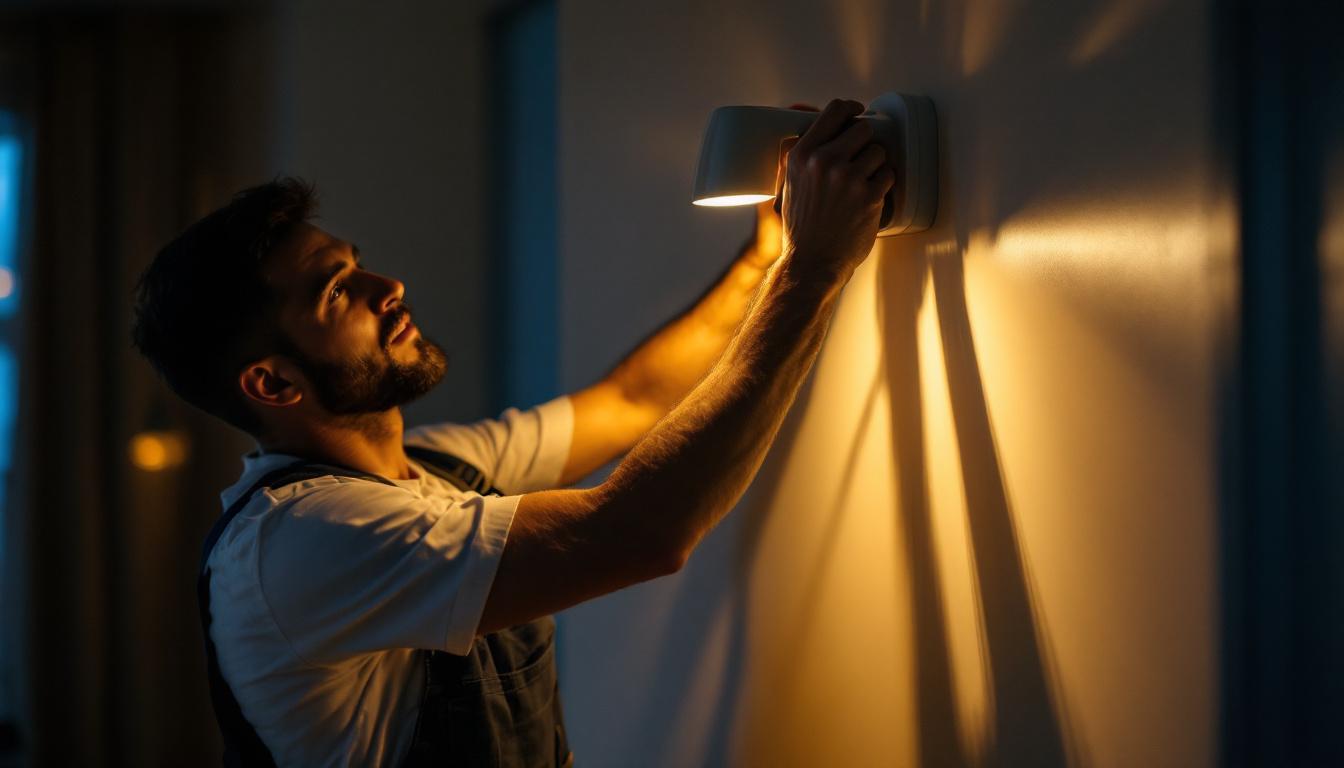
Lighting plays a crucial role in the functionality and aesthetics of a space, particularly in kitchens and work areas. Hard-wired under cabinet lighting not only enhances visibility but also adds a touch of elegance. For lighting contractors, understanding the essential tools required for installation is vital to ensure a seamless and professional finish. This article delves into the necessary tools and techniques to effectively install hard-wired under cabinet lighting.
Hard-wired under cabinet lighting refers to fixtures that are directly connected to the electrical system of a home or commercial space. This type of lighting is preferred for its clean look and the absence of visible cords, contributing to a more streamlined appearance. By eliminating the clutter of cords, hard-wired systems not only enhance the visual appeal of a kitchen or workspace but also promote a safer environment by reducing the risk of accidents caused by loose wires.
These fixtures can be installed in various configurations, including linear strips, puck lights, or recessed options. Each type offers unique benefits, making it essential for contractors to understand the specific requirements and best practices for installation. For instance, linear strips can be cut to fit any length, making them a flexible choice for custom cabinetry, while puck lights can be used to spotlight decorative elements or task areas, adding both functionality and style.
One of the primary advantages of hard-wired under cabinet lighting is the enhanced safety it provides. Unlike plug-in models, hard-wired lights eliminate the risk of tripping over cords or having unsightly wires exposed. Additionally, they often offer more powerful lighting options, which is particularly beneficial in workspaces where visibility is crucial. The ability to choose higher wattage fixtures can significantly improve the quality of light, making it easier to perform intricate tasks like cooking or crafting.
Moreover, hard-wired systems can be integrated with home automation systems, allowing for greater control over lighting settings. This flexibility can enhance the overall user experience, making it an attractive option for homeowners. With smart technology, users can adjust brightness levels, set timers, or even control the lighting remotely via smartphone apps, adding convenience and energy efficiency to their daily routines.
Contractors should be familiar with the various types of hard-wired under cabinet lighting available on the market. Linear LED strips are popular for their versatility and ability to provide even illumination across a wide area. Puck lights, on the other hand, are compact and can be strategically placed to highlight specific areas or features, such as a beautiful backsplash or a collection of cookbooks. Their small size allows for creative installation options, including angles and clusters that can create a visually dynamic effect.
Recessed fixtures offer a sleek, modern look and can be installed flush with the cabinet surface, creating a minimalist aesthetic. These fixtures are particularly appealing in contemporary designs where clean lines are paramount. Understanding the differences between these options will help contractors make informed recommendations to clients based on their specific needs and preferences. Additionally, considering factors like color temperature and dimmability can further tailor the lighting experience, ensuring that it complements the overall design and function of the space.
To successfully install hard-wired under cabinet lighting, contractors need a set of specialized tools. Having the right equipment on hand not only speeds up the installation process but also ensures a professional finish.
Every contractor should have a reliable set of basic hand tools. This includes screwdrivers, pliers, and wire strippers. Screwdrivers are essential for fastening the fixtures to the cabinets, while pliers assist in bending and manipulating wires. Wire strippers are crucial for preparing the electrical connections, ensuring that wires are properly exposed and ready for installation.
Additionally, a level is important for ensuring that fixtures are installed evenly. An uneven installation can lead to aesthetic issues and may affect the functionality of the lighting.
Electrical tools are a must-have for any lighting contractor. A multimeter is essential for testing voltage and ensuring that electrical connections are secure and functioning properly. This tool helps prevent potential electrical hazards and ensures that the installation meets safety standards.
Wire nuts and electrical tape are also important components of the installation process. Wire nuts secure wire connections, while electrical tape provides additional insulation and protection. Having these materials readily available can streamline the installation process and enhance safety.
In addition to basic and electrical tools, specialized installation tools can make the process more efficient. A stud finder is invaluable for locating the best spots to secure fixtures, ensuring that they are anchored properly. This tool can help avoid damage to cabinets and ensure a stable installation.
A drill with a variety of drill bits is also essential, as it allows for easy installation of fixtures and can assist in creating holes for wiring. Having the right drill bits on hand ensures that contractors can tackle various materials, from wood to drywall, without complications.
Before beginning the installation process, thorough preparation is crucial. This includes assessing the workspace, gathering tools, and understanding the electrical layout.
Contractors should take the time to evaluate the area where the under cabinet lighting will be installed. This includes measuring the length of the cabinets and determining the best placement for fixtures. Proper planning can help avoid mistakes and ensure that the lighting is both functional and aesthetically pleasing.
Additionally, it’s important to consider the existing electrical layout. Knowing where outlets and switches are located can help contractors plan the wiring routes more effectively, minimizing the need for extensive modifications.
Once the workspace has been assessed, contractors should gather all necessary materials. This includes the lighting fixtures themselves, wiring, connectors, and mounting hardware. Having everything on hand before starting the installation can save time and reduce frustration during the process.
It’s also advisable to have extra materials available, such as additional wire or connectors, in case unexpected issues arise during installation. This foresight can prevent delays and ensure a smoother workflow.
The installation process for hard-wired under cabinet lighting involves several steps, each requiring careful attention to detail. Following a systematic approach can help ensure a successful outcome.
Before beginning any electrical work, it is imperative to shut off power at the circuit breaker. This step is crucial for ensuring the safety of the contractor and preventing electrical accidents during installation. It is advisable to use a multimeter to confirm that the power is indeed off before proceeding.
Once the power is confirmed to be off, contractors can begin the installation process with peace of mind, knowing that they are working in a safe environment.
After ensuring safety, contractors can begin wiring the fixtures. This involves connecting the fixture wires to the existing electrical wires in the cabinet. It is essential to follow the manufacturer’s instructions for wiring, as different fixtures may have specific requirements.
Using wire nuts, contractors should securely connect the wires, ensuring that there are no exposed ends. Once the connections are made, electrical tape can be used to add an extra layer of protection. This step is vital for preventing short circuits and ensuring long-term reliability.
With the wiring complete, the next step is to mount the fixtures. Contractors should use a level to ensure that the fixtures are installed evenly. This attention to detail not only enhances the appearance of the installation but also ensures that the lighting is effective.
Once the fixtures are securely mounted, the final step is to test the system. Contractors should restore power at the circuit breaker and turn on the lights to confirm that everything is functioning as intended. If any issues arise, troubleshooting may be necessary to identify and resolve the problem.
After the installation process is complete, there are several important considerations for contractors to keep in mind. These can enhance the overall quality of the work and ensure client satisfaction.
Educating clients about their new lighting system is an essential part of the installation process. Contractors should take the time to explain how to operate the fixtures, including any dimming features or smart controls. Providing this information empowers clients to make the most of their new lighting.
Additionally, contractors should inform clients about maintenance requirements, such as bulb replacement or cleaning procedures. This proactive approach can help clients enjoy their lighting for years to come.
After the installation, seeking feedback from clients can provide valuable insights into the quality of the work and areas for improvement. This feedback can help contractors refine their skills and enhance their services for future projects.
Following up with clients a few weeks after installation can also demonstrate professionalism and commitment to customer satisfaction. This gesture can strengthen relationships and lead to potential referrals.
Hard-wired under cabinet lighting is an excellent choice for enhancing both the functionality and aesthetics of a space. For lighting contractors, understanding the essential tools and techniques for installation is crucial to delivering high-quality results. By preparing adequately, using the right tools, and following a systematic installation process, contractors can ensure that their work meets both safety standards and client expectations.
Ultimately, investing time in mastering the installation of hard-wired under cabinet lighting can lead to increased client satisfaction and a stronger reputation in the industry. As the demand for effective and stylish lighting solutions continues to grow, contractors who are well-equipped with knowledge and skills will undoubtedly thrive in this competitive field.
Ready to elevate your lighting installations with the best tools and fixtures in the industry? Look no further than LumenWholesale for all your hard-wired under cabinet lighting needs. Our extensive selection of spec-grade lighting products is designed to meet the highest industry standards, ensuring you deliver exceptional results to your clients every time. With unbeatable wholesale prices and the convenience of free shipping on bulk orders, you can trust LumenWholesale to provide premium lighting without the premium price tag. Don’t let middleman markups affect your bottom line. Choose LumenWholesale for Wholesale Lighting at the Best Value and make your next project shine.

Discover how lighting motion sensors are revolutionizing the work of lighting contractors by enhancing efficiency and reducing energy consumption.

Discover the ultimate Wall Outlet Cover Box: Lighting Contractors’ Guide.

Discover essential strategies and expert tips for lighting contractors to efficiently manage and install 3 post switch systems.

Illuminate your next project with confidence using our comprehensive checklist for hanging lamp fixtures.